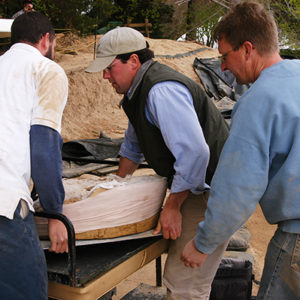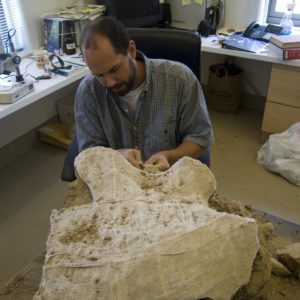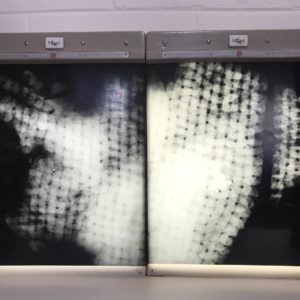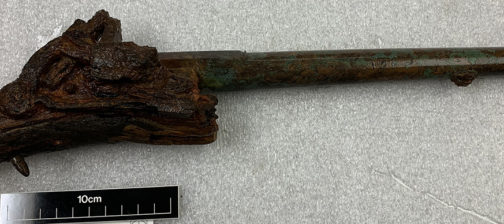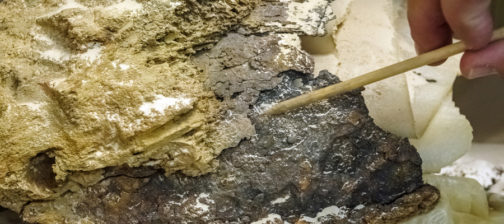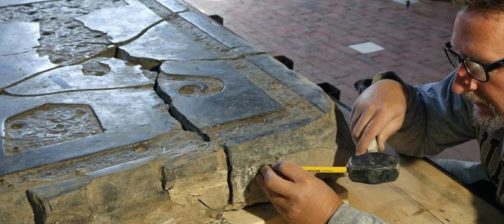In 2005, while excavating a soldier’s pit (Pit 8), archaeologists came upon a mass of these small iron plates. Called a jack of plate, this artifact is a type of armor made up of many small plates that would have been sewn into a vest made of canvas and or leather. While it is common for archaeologists to find the individual plates on their own, finding them in a mostly complete vest is very rare.
After investigating the artifact in situ, conservators determined that the vest should be kept intact. A plan was made for how to best remove the artifact from the ground in order to continue treatment in the lab. A hardener was sprayed onto the piece and a layer of cheesecloth was laid on top, which kept the many plates intact. The artifact was pedestaled, or excavated so that the surrounding dirt helped to provide stability. Once dry, the armor, along with the pedestal of soil, was undercut and a steel plate slid underneath. Once the intact jack of plates were stable on the steel plate, it was carried into the lab for further excavation and stabilization.
Once in the lab, as much soil as possible was removed. The next step in the conservation process was to x-ray the piece. The artifact’s large size meant that this could not be done with equipment at Jamestown, so the mass of metal and soil was transported to the Colonial Williamsburg Archaeological Conservation Lab. The resulting x-ray provided a clearer image of the piece, allowing conservators to formulate a plan for continued cleaning and stabilization.
This process required the removal of the soil and corrosion that had adhered to the jack of plate over the past 400 years—all while maintaining the artifact’s intactness. This process took almost a year to complete. Today, the armor is stable and is stored in the controlled environment at the Jamestown lab. There are plans to display this important artifact in the Archaearium museum in the future so its history and uniqueness can be shared with the public.
related images
- The jack of plates being removed in a block of soil
- Conservator Michael Lavin removes dirt surrounding the jack of plate armor
- X-ray of the jack of plate



